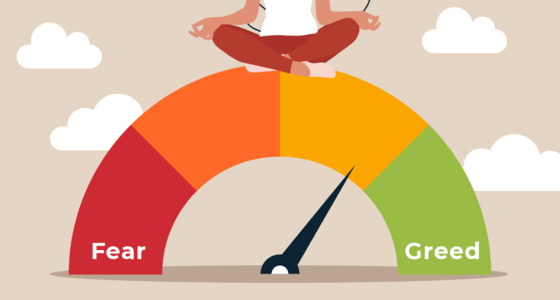

The trading landscape has undergone significant transformations in recent decades, with traders increasingly forecasting price movements and comprehending market dynamics. In the past, central banks and financial institutions could manipulate markets without traders knowing their actions. However, with the advent of advanced trading platforms and tools, traders can now employ specific techniques to align themselves with these major participants. One such technique is the use of order blocks as a trading strategy.
In this article, we will explore what order blocks are in the market, how to identify them, and how to incorporate the order block trading strategy into your trading activity.
What Are Order Blocks?
Order blocks in trading refer to situations where central banks or large financial institutions accumulate significant quantities of a specific asset through a single large order. These blocks represent supply or demand zones where major participants feel comfortable placing large buy or sell orders to execute significant transactions. However, due to the potential for triggering unexpected market movements and creating high volatility, banks and financial institutions must exercise caution when executing these orders.
To avoid disrupting the market and causing drastic price changes, central banks and institutions often split their orders into smaller blocks. They enter the market, make a purchase, and then disappear. This process is repeated until they reach their target. For instance, if a large bank needs to buy 200 million EUR/USD, it may execute the purchase in three or more steps.
In many cases, these institutions employ sophisticated order types to conceal their involvement in the market. They may use an order that appears as a single bid or sell order, even though they possess a larger block of assets. Other traders must learn to discern these patterns, as it is one method through which central banks and institutions achieve their objectives without adding excessive volatility to the markets or significantly impacting prices.
Identification of Order Blocks
Identifying order blocks requires a keen understanding of market dynamics and the ability to analyze trading data effectively. If you can access level 2 market data, you can identify order blocks by observing above-average order quantities that are not significantly influenced by price fluctuations. It is how central and large investment banks typically execute their purchases — by acquiring substantial amounts of an asset within a narrow price range.
However, if you rely primarily on level 1 market data and trading charts, you can identify order blocks by recognizing accumulation or distribution phases. An accumulation phase indicates a bullish order block, while a distribution phase indicates a bearish order block.
Note! The Level 2 market data is an order book that shows the complete list of offers of the market maker who placed the order and the quantity (order size). The Level 1 order book shows the latest bid and asks prices.
Bullish Order Blocks
A Bullish Order Block (BuOB) occurs when a central bank or major financial institution accumulates significant quantities of a specific currency. For example, the Bank of Japan (BoJ) may aim to weaken the Japanese yen against the US dollar to stimulate economic growth. The BoJ would enter the foreign exchange market and purchase substantial US dollars in such a scenario.
To identify a bullish order block, examine the price chart above. Once the price breaks outside the resistance level, there is a high likelihood that the bullish trend will continue. During an extended period of consolidation, you may notice several candles with high trading volume, indicating the accumulation of the asset (these candles are typically green).
Bearish Order Blocks
Conversely, a Bearish Order Block (BeOB) occurs when a central bank or institution enters the market to sell a counter currency and strengthen the value of its currency. For example, consider the US dollar against the Swiss Franc (USD/CHF).
To identify a bearish order block, observe a distribution area where a major participant sells significant amounts of USD and buys Swiss Francs as anticipated; when the price breaks below the support level, the price falls in alignment with the intentions of the primary participant.
Factors to Consider When Using the Order Block Trading Strategy
While order blocks can be a valuable trading strategy, several factors should be considered when incorporating this approach into your trading strategy.
#1. Order Blocks Are Not Everyday Occurrences
Finding order blocks in the markets is not a predictable event that can be consistently added to your trading plan. The entry of central banks or significant participants into a market is often unannounced, making it challenging to anticipate such occurrences.
Additionally, order blocks are rare phenomena, only sometimes encountered. Therefore, relying on something other than order blocks as your primary trading strategy is advisable. Instead, integrate them into your overall trading system and employ them whenever you identify them in the market.
#2. Range Duration Indicates Potential Move Size
During the accumulation or distribution phase, markets often trade within a sideways range before experiencing a significant price movement. Central banks and important institutions often seek to prolong the range period to facilitate completing their purchases at similar price levels, minimizing volatility and trending markets.
It is crucial to remember that the longer the field persists, the larger the subsequent move is likely to be. Please familiarize yourself with the Wyckoff chart pattern and market theory, as they guide entering a position when the price breaks above or below the support or resistance level.
#3. Volume Indicators Enhance Analysis
When utilizing order block trading strategies, it is essential to incorporate volume indicators into your analysis. Volume indicators help confirm whether the accumulation or distribution period is characterized by significant trading volume and whether a major participant accumulates or distributes the asset within a specific supply or demand zone.
Remember that order blocks may resemble ranging markets, but not every range indicates an order block. By employing volume indicators, you can confirm whether the trading volume is unusual and aligns with the characteristics of an order block.

Order Blocks Trading Strategy: Pros and Cons
Using the order blocks strategy has advantages and disadvantages. Let’s consider them in more detail below.
Pros:
- Effective Trading Strategy: Order block trading is valuable and practical, particularly in the foreign exchange market.
- Insight into Central Bank Activities: Order blocks enable you to gain insights into the actions of central banks and financial institutions, helping you anticipate potential market movements.
Cons:
- Challenging to Identify Order Blocks: Identifying order blocks requires expertise and experience in analyzing market data and patterns.
- Additional Indicators Needed: Successfully implementing order block strategies necessitates using other volume indicators to confirm the presence of order blocks.
The Bottom Line
Order blocks provide a practical approach to understanding market movements, where central banks significantly influence currency values. They offer valuable insights into the driving forces behind price changes. While order blocks can be an effective technique for gaining real-time market information, there is no definitive consensus on incorporating them into a trading system.
You must be aware of their market presence to utilize order blocks effectively. You should focus on identifying accumulation or distribution areas that result from the activities of central banks and major institutions. It can be done by recognizing consolidation ranges or unique chart patterns where the price reaches market equilibrium.
When an order block is identified, you can integrate it into your trading strategy by entering a position when the price breaks below or above support and resistance levels. It allows you to capitalize on the momentum generated by these entities’ substantial purchases or sales.
It is important to note that order blocks are not daily and can be challenging to identify. They require expertise and experience in analyzing market data and patterns. Additionally, incorporating volume indicators can help you confirm the presence of order blocks and enhance the analysis.
In conclusion, while order blocks offer a practical approach to understanding market dynamics, you should approach them cautiously and integrate them into your overall trading strategy when identified. By doing so, you can gain insights into the activities of central banks and major institutions, which can help anticipate potential market movements and improve trading results.
FAQs
Let’s also consider the popular questions of traders about the order blocks trading strategy.
What do order blocks mean?
Order blocks refer to areas in trading where governments and significant institutions accumulate orders to enter or exit positions. These participants often require executing their entire quantity in one order but do so in blocks. Retail traders commonly utilize order blocks to anticipate future price movements.
How do order blocks work in the market?
It is widely known that central banks play a significant role in influencing their currencies’ levels. However, central banks must ensure currency exchange rate stability and cannot execute large orders that might disrupt other market participants. Therefore, they manage orders in blocks or multiple steps. For example, if a bank intends to buy 200 million British pounds against the US dollar, they would complete the purchase in blocks of 10 million, 20 million, and so on.
How can I identify order blocks in the market?
There are no specific tools available to identify order blocks in trading. One effective method is identifying consolidation ranges or unique chart patterns where the price reaches market equilibrium.
Additionally, using volume indicators to detect high trading volume can confirm the presence of order blocks. Developing the skill to identify potential areas where central banks and hedge funds accumulate or distribute large amounts of an asset will come with experience and practice. Another approach is to utilize order flow analysis to observe market orders awaiting execution.
In conclusion, order blocks provide valuable insights into market dynamics, where central banks and major institutions exert influence. While not an everyday occurrence, identifying order blocks can enhance trading strategies. By leveraging order blocks effectively, you can gain a deeper understanding of market movements and improve your trading results. You should consider the duration of ranges and incorporate volume indicators for a comprehensive analysis.









